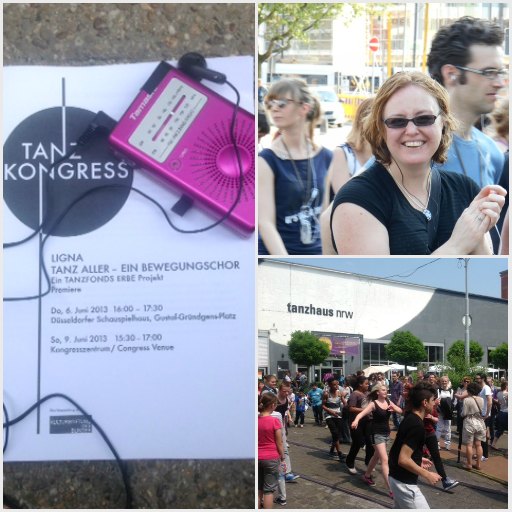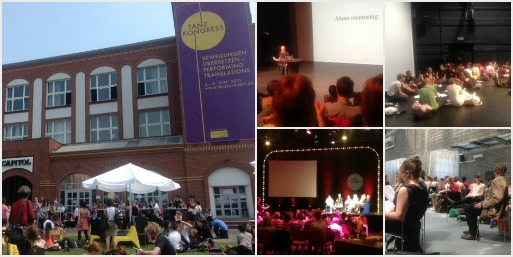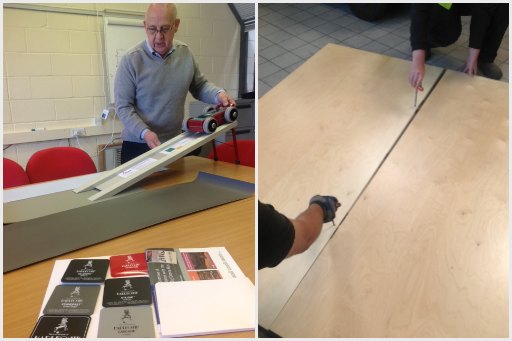The National Advocates for Arts Education (NAAE) has warmly welcomed news the ACARA Board has approved the new The Australian Curriculum: The Arts. NAAE, of which Ausdance is a member, has strongly supported the development of the arts curriculum and its central principle of the entitlement of every young Australian to an arts education, one that includes all five artforms – dance, drama, media arts, music and the visual arts.
NAAE welcomes new Arts Curriculum
2013 Australian Dance Awards—shortlisted nominees
Congratulations to the all nominees who were shortlisted for a 2013 Australian Dance Award!
Here they are (in alphabetical order)—
Queens Birthday Honours for dance
Congratulations to Ausdance founding member Professor Shirley McKechnie AO and Head of Dance at WAAPA and former Chair of the Tertiary Dance Council of Australia, Nanette Hassall AM for their Queen's Birthday Honours.
Both Shirley and Nan have been recipients of an Australian Dance Award for Lifetime Achievement.
Congratulations also to Sydney Dance Company collaborator Iva Davies, and former Chair Rowan Ross.
Renie Allison-Matini of Victoria and Daryl Powell of the ACT were recognised with OAMs for their contributions to the broad dance community.
Tanzkongress 2013 performance highlights
What would an international dance conference be if it did not include an array of performances? Even though Tanzkongress itself was only three days, there were a significant range of performance, workshop and class opportunities.
The opening celebrations included the staging of a movement choir entitled Tanz Aller (everyone dancing). Audience members became the performers, directed through individual radio sets with the staging led by the artists' collective Ligna. Movement choirs were popular in 1920s Germany and used at rallies of the working class. The experience was a rich one, a great opportunity to bond with strangers from around the world as we formed patterns and movements, while also hearing the history of the movement choirs.
 Left: Radio sets were used to direct audience performers in the Tanz Aller movement choir. Right: Audience members performing in the Tanz Aller movement choir (photo Julie Dyson). Below right: Songlines Flash Mob
Left: Radio sets were used to direct audience performers in the Tanz Aller movement choir. Right: Audience members performing in the Tanz Aller movement choir (photo Julie Dyson). Below right: Songlines Flash MobThe main stage opening was a performance of La Creation du monde 1923 – 2012. This performance included a re-staging of the original la creation du monde; a so-called 'ballet negre' originally presented in 1923, book-ended by modern interpretations and questions on the themes presented in the ballet. Colonialism and the appropriations of African cultures were passionately explored by Congolese choreographer Faustin Linyekula and CCN-Ballet de Lorraine.
Other highlights on the program included a 20th Anniversary presentation by Candoco Dance Company. From London UK, Candoco was formed to provide an artistic vehicle for performers with and without disability. They have gathered a strong international reputation including a starring role in the ceremonies of the London Olympics. Chunky Move artistic director Anouk van Dijk teamed up with longer term collaborator Falk Richter for Rausch (intoxication). Seven dancers and five actors explored themes of freedom and connection in spell-binding mix of high-powered theatre and dance.
Of course there were also less formal performances. Dutch choreographer Erik Kaiel has been working with students from St Benedikt school in Duesseldorf, resulting in some flash mob performances in amongst the Congress participants.
Tanzkongress encouraged participation in the creation of new works, as well as the re-staging of the old, through its dance and workshop program. It was a valuable opportunity to see a range of performances from outside Australia.
Tanzkongress 2013—Performing Translations
In 2006 Berlin staged the first Tanzkongress of modern times. Now in its third iteration, the conference has established itself as a vital part of European dance discussions. Supported by the German Federal Cultural Foundation, Tanzkongress draws participants from around the globe including New Zealand, USA, Australia, India and throughout Europe. Tanzkongress 2013 has the theme of 'performing translations' exploring commonalities and differences in dance and how we can work across communication forms.
Translation takes place not only between practices and competences, art forms and styles, ideologies and generations. Art meets politics, practice meets theory, dance meets technology. Tanzkongress program
Around 1000 participants worked with nearly 200 presenters—dancers, choreographers, academics and teachers, producers, and critics—covering areas such as choreography, education, journalism, dramaturgy, politics, architecture, sociology, philosophy, and medicine.
The Dance Congress is a congress for dance, yet one that treats the concept of dance in an extremely broad sense and thus proves the art form's relevance to other disciplines and the connectivity of its discourse beyond dance. Tanzkongress program
On Mentoring
It was impossible to be everywhere and be part of everything, but highlights for me included the ‘On Mentoring’ discussion led by renowned choreographer Jonathan Burrows.
Jonathan presented his thoughts on the idea of mentoring, noting that any application for arts funding in the UK these days needs to include a mentoring component. The audience then broke into smaller groups to reflect and share experiences. Important in an international forum was the cultural implications of mentoring—in that some places only respect direct teacher-student relations rather than the cross-beneficial concepts understood in mentoring. There was also shared recognition that while mentoring can happen in quite fluid ways, there is benefit in formal mentoring relationships that bring with them time, commitment and patience.
 Left: Tanzkongress venue. Top: ‘On mentoring’ discussion led by renowned choreographer Jonathan Burrows. Bottom: Dance for cities panel and audience for ‘East-Western perspectives on dance journalism’. Photos: Roslyn Dundas.
Left: Tanzkongress venue. Top: ‘On mentoring’ discussion led by renowned choreographer Jonathan Burrows. Bottom: Dance for cities panel and audience for ‘East-Western perspectives on dance journalism’. Photos: Roslyn Dundas.East-Western Perspectives on Dance Journalism
A panel discussion titled 'The Contemporary and the Critical—East-Western Perspectives on Dance Journalism', explored the cultural understandings of dance performance and review. Session participants were witness to an interesting discussion on the need, or not, to have a cultural understanding on a dance piece being witnessed. Traditional and contemporary as dance forms were dissected, as was the overlap of ritual and entertainment. Indian based choreographer Anusha Lall commented "If I have been moved, shifted in my skin" then that moment of empathy is valuable, even if the cultural background or understanding isn't there.
The Renaissance of Dance Cities
Bureaucrats, ballet directors and former politicians gathered for a fiery debate about the place of dance within a city's development. The recognition that people of all walks of life enjoy living in a culturally rich community has supported the development of dance and arts hubs; however, recent economic pressures have seen programs across Europe rolled back. It is clear having infrastructure developed while economic times are good can help maintain connection and development in leaner times; however the priority needs to be supported across all levels of bureaucracy and government.
And outside the lectures and panel discussions...
Tanzkongress participants were able to take dance classes, be part of research, see performances and catch-up with colleagues from around the globe. The German Federal Cultural Foundation have indicated their commitment to Tanzkongress continuing, but in the meantime outcomes from the 2013 conference continue to be added to the Tanzkongress website.
Dance and science—knowledge and creativity.
There is so much we still have to learn about dance. Human bodies have been dancing for centuries and some of our training techniques have been passed on from generation to generation.
At Trinity Laban Conservatoire of Music and Dance, Dr Emma Redding, head of dance science, is leading a growing group of researchers and students applying scientific methods to the dance training we do every day, seeking to gain knowledge about the body and the impact of dance.
Visiting Harlequin HQ
One of the key supporters of the Australian Dance Awards is Harlequin Dance Floors. Established in 1979, Harlequin supply dance floors around the world, so it was great to meet with them at the Harlequin HQ in Kent, England.
 Ray, Technical Director with Harlequin undertaking a slip test on Harlequin vinyl floors. Paul, demonstrating the innovative locking method of the 'Liberty' panels
Ray, Technical Director with Harlequin undertaking a slip test on Harlequin vinyl floors. Paul, demonstrating the innovative locking method of the 'Liberty' panelsMark Rasmussen, Global Group Marketing Manager, took the time to show me the main workshop and a presentation on how Harlequin are continually refining their knowledge and processes with the aim of ensuring dancers get the best support they can from a Harlequin dance floor. Harlequin supply a range of different floor types including portable and permanent floors. They have recently redone the stages at the Bolshi Ballet in Russia, and supply the floors for Sydney Dance Company and the Australian Ballet. Riverdance performances for the last ten years have been on a portable Harlequin floor.
Harlequin have been interested in research (being undertaken in the Netherlands, the United Kingdom and in Australia) looking at the scientific benefits and different impacts of floors on the dancers body. A lot has changed in the last few decades as dancers, teachers and choreographers have become more aware of safe dance practices. A good floor is just as vital to a dancer's wellbeing as a good diet and well-trained technique. Ten years ago research was based on sports floor models, but now we know what a basketballer is looking for out of a floor is significantly different to what a contemporary, classical or ballroom dancer needs. We have known for years that sports floors aren't ideal but research is still underway looking at what is right for dancers. And, of course one of the ongoing challenges is that what a classical dancer requires in a floor is different to what a hip-hop or tap dancer needs. While Harlequin have a growing range of floors available, studio owners, community dancers, performance facility directors and companies need to make an individual assessment about what will work best for their dancers.
Over the coming months DanceUK and Ausdance will be reviewing the recent research on dance floors and updating our dance floor information sheets.

